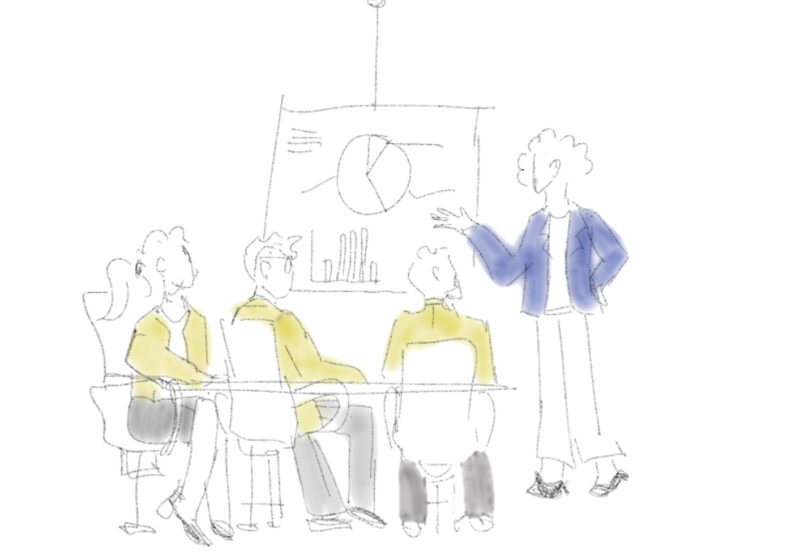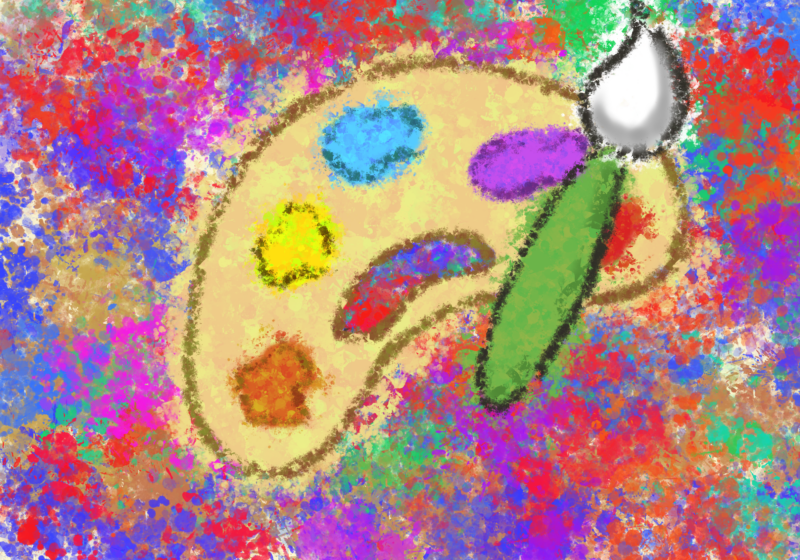Tarana Burke, founder of the #MeToo. movement and a Time magazine “Person of the Year,” sat down for an interview with the Campus Times before her speech last Monday. The following transcript has been lightly edited for style, grammar, and clarity
Campus Times: You’ve been everywhere: The Red Carpet, Cornell, and you were on the cover of Time magazine with two professors from our school. What are your thoughts on what has gone on here and what came out of the independent investigation?
Tarana Burke: I was just having a conversation with some of the students at the reception, and I think now that I’m here, I’ve read these things before I got here, and I was frankly, even before I read the beginning independent report, I was really disappointed in the framing of it. It starts out from a very defensive place, you know. And if the school is going to be defending anybody it should be students. So that set a tone for me. And I talked to the professors who are in Time with me, and I’ve been in conversation with them, and some other professors here. And so I had recently gotten some more background and another layer of background, which just made it even more just troubling to hear the depths that the school was going to to protect itself versus the students. This is what I talk about, why we have to not talk about perpetrators as individuals, but about systems that are in place. This is an institution that has a lot more power and leverage and resources to use. So they have to use it. You have to make a decision. Do you use it in service of or do you use it in defense of? It feels like they’ve made the wrong decision. And so I got here today, and I’ve been talking to students for the past hour, and hearing the sentiment from the students just really solidified for me that there is a huge disconnect between the student body, the faculty, and the administration. And whenever that happens, that divide, healing can’t take place in that divide. There’s a gap that exists. It won’t allow healing to happen anywhere, not on a campus, not in the administration, not among the students, unless that divide is fixed first. That’s how I feel. It’s terrible what’s happening here.
CT: Richard Feldman, who will be replacing Joel Seligman on February 28, recently announced the creation of a website called “Cultivating a Culture of Respect,” and he laid out the 12 recommendations that Mary Jo White made. What can we do?
TB: Let me pull that out right now. I just want to see what it looks like.
CT: After looking at those 12 recommendations, what can we do as students and the University community to make sure that the UR complies with the recommendations in the report and on the website?
TB: You know, I’m just looking through the recommendations now […] Well one, this senior cabinet-level official needs to report to or be held accountable to by a body which is made up of students and faculty. One of the things I say in my remarks tonight is that if whatever the solutions are — that you come up with — they have to be centered around students. Students have to be a part of that process and the survivors, who in this case really are just the students. There are the people who actually made the complaints and then there’s reverberation of that, which has affected the whole campus. And now you have a whole campus of people who feel victimized by this situation, and so they need to be centered in whatever the solution process is. They need to be weaved all into these recommendations. I think that’s one way to ensure accountability and then even the ones that are not weaved into this process. As a student body, this is a moment where you have to be active and every way — and that doesn’t mean having a rally, protest or a march, but finding really creative ways to push back against the administration. You have to, as a collective, and you have to work across interests. This is when all of the clubs need to get together. All of the people are interested in justice across various boundaries that we usually create for ourselves, especially on college campuses, have to come together and make a real statement that says, “We won’t tolerate this.” This is you community, right. You spend way more time here than you spend with your family. People live here. This is your community. The same way that we hold the president of our country accountable, we want to hold the president of this school accountable and all of the people who responsible for instituting policies that protect students.
CT: So you talked about some of these “creative ways.” At our school we’ve had a lot of protests and town hall meetings. Besides those two methods, what are some of those “creative ways” that our students can really establish a voice and hold the University accountable?
TB: Maybe you don’t pay tuition.
CT: Okay (laughs).
TB: This is the thing, you have to hit people where it hurts. That’s a part of organizing. I could come up with a bunch of kind of actions that you can take, and that people can organize around. But what I mean is that is takes a collective of people coming together with very diverse ideas, and the very first idea is we are not going to do what we’ve always done. And once you decide we are not going to do what we’ve always done, then you allow creativity to flow. Just be creative. I was advising a group of students in Long Island and I had a talk at Stony Brook, where they had a similar situation. I said maybe you take and you go get a collection of money together and print giant signs with the quotes from the students who have been victimized, and you plant them all over school. And even if the school takes them off the next day, you have social media now. Pictures of a campus that is littered with these giant signs of what people went through, that you can’t ignore […] and it goes viral. They can’t ignore that. What the school doesn’t want is the outside, the rest of the world looking in and passing judgement against them. They want to contain this as much as they can. They want to keep it on campus. They want to deal with it internally. The minute you turn outward, you get a different kind of attention. There are all kinds of possibilities for thinking outside of the box.
CT: A lot of the outcry has been about our Title IX office as well.
TB: Yeah, I heard that’s a mess too.
CT: How do you think we can to the bottom of Title IX Office’s mistakes? How can its issues with communication with the students be solved?
TB: I think it’s the same thing. The students have to demand. The students really do have the power here, and not only do you have the power in this school, we are in a moment where there is a global community of people who are ready to support, push back and fight around this issue. So, you have to seize these opportunities. We are in a space right now where we have a person who oversees the Department of Education who is trying to gut Title IX. So if we don’t push back from the ground up, we will lose the gains we’ve already made. So this is one of those things. So if you have a Title IX compliance officer who is talking about false accusations and the cliche and stereotypical things that people say to discourage women or people around disclosure, that is deeply problematic. And so again, the students have the power. You all really have the power to stand up and push back […] This is breeding ground for creativity and imagination. So, this is the place to come together, you have young minds. I’m sure you can come up with some brilliant things collectively.
CT: How can UR and all other universities going through this heal? How can we work together with the school’s administration to get there? You talked about pushing against it, but how can we also work together with it?
TB: Pushing against it is not just to be resistant for the sake of being resistant. There has to be a common ground. Sometimes the pushing is to make sure you get to that place. And sometimes you can get to that place, but you still have to push. So all of it is necessary. I think that there are mechanisms in place, and to be fair, the 12 steps that are laid out look like a good start, but I feel like you asked that question because what we know historically that people will put things down on paper, but they won’t live up to them. Given the benefit of the doubt — which they haven’t really earned at this point — but given the benefit of the doubt that they will go through these 12 steps, that’s a great place to start. And that’s a great place to involve the students, so they make sure that [the students] get what they need.
CT: And healing?
TB: Yeah, that’s the only way healing can happen. Healing has to happen collectively. It can’t just be the students getting everything they want or the administration getting everything they want, there has to be a collective healing on the campus, so that it is actual and it’s real. And people have to get transparent and vulnerable. We don’t like to use those words when we are dealing with things that are legal and systems and what not. But it’s the same ways that you have to heal as an individual. People have to get really down to the nitty-gritty, you have to be truthful, you have to be like radically truthful. In order for you to get to the bottom part, so you can rebuild.






